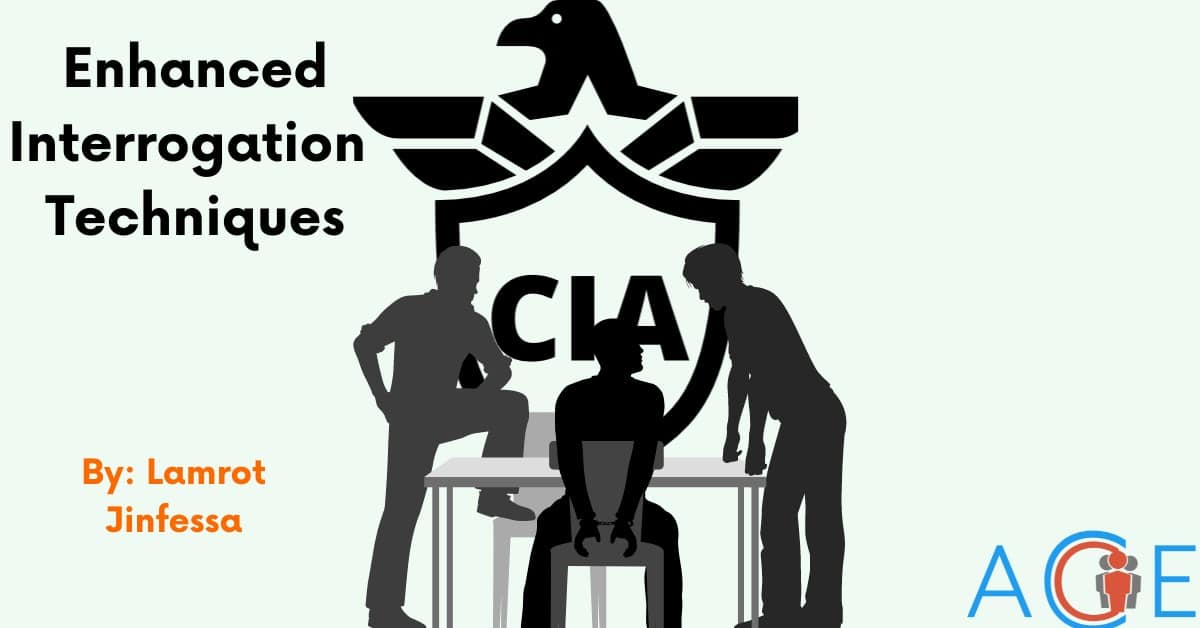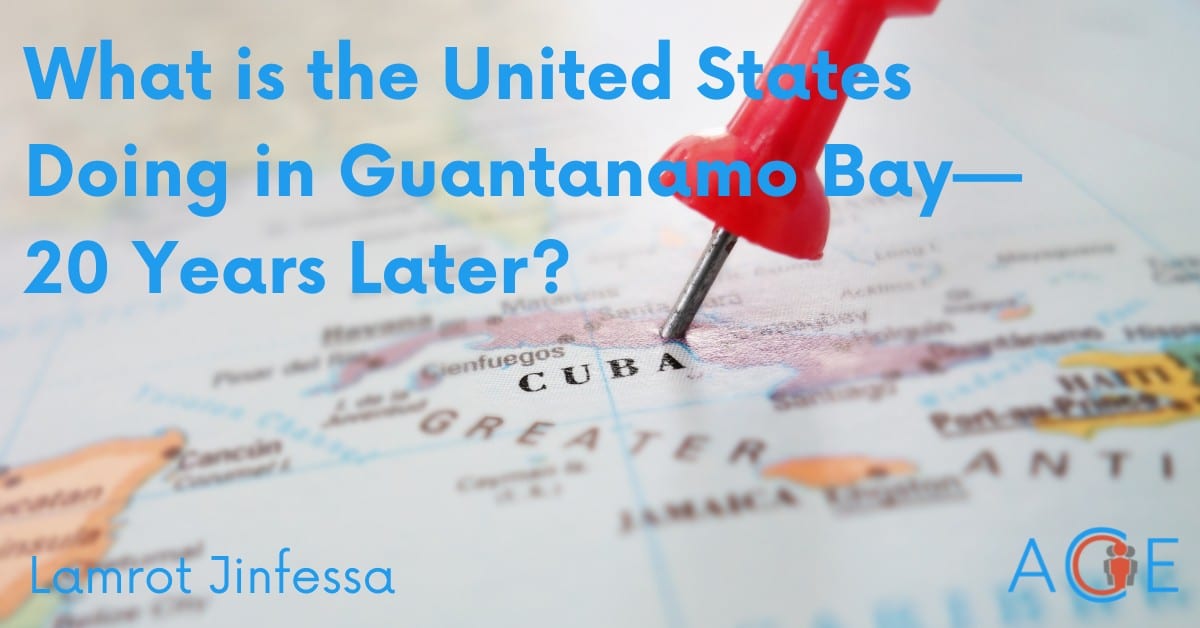What are Enhanced Interrogation Techniques?
Enhanced Interrogation Techniques refers to interrogation methods employed by the Central Intelligence Agency (CIA) and Defense Intelligence Agency (DIA) on detainees at remote detention centers, including Guantanamo Bay. These interrogation techniques were authorized shortly after the 9/11 attacks with the goal of extracting intelligence from suspected terrorists. During these special interrogations, the U.S. government approved the use of techniques including sleep deprivation, total isolation, waterboarding and more. Enhanced Interrogations were carried out between 2002 to 2009. At least 39 detainees during this time period underwent “enhanced interrogation”.
The Authorization of Use of Military Force (AUMF) was enacted by Congress as another War on Terrorism initiative. The Act granted the President the power “to take…necessary actions against international terrorists and terrorist organizations, including those nations, organizations, or persons who planned, authorized, committed, or aided the terrorist attacks that occurred on September 11, 2001”. AUMF served as a legal foundation for the military invasion and operations in countries over two decades.
On Sept 17, 2001, President George W. Bush signed a classified covert action Memorandum of Notification (MON), authorizing the CIA to capture and detain persons suspected of terrorist activities.
AUMF and MON were used to justify the use of enhanced interrogation on detainees deemed to be suspected terrorists. Policymakers are now asking whether the use of these techniques is an effective and ethical method of eliciting information or discouraging insurgents.
Enhanced Interrogation Arguments:
Following the Sept. 11, 2001 attacks, the Bush administration grappled with what to do with prisoners of war and suspected terrorists offered to the U.S by other countries. A letter sent by the CIA to the White House advocated for torturing individuals such as Abu Zaubaydah, a detainee in Guantanamo Bay, to protect American lives; The CIA wrote to the White House, “countless more Americans may die unless we can persuade [Abu Zubaydah] to tell us what he knows.”
The Senate Intelligence Committee published a report that details hidden aspects of the CIA interrogation program. The CIA continued to justify the usa of enhanced interrogation by describing their program to the Department of Justice and Congress as “getting unique, otherwise unobtainable intelligence that helped disrupt terrorist plots and save thousands of lives,” an official who briefed the report informed The Washington Post. As a testament to the effectiveness of the enhanced interrogation techniques used on detainees, the CIA cited examples of specific terrorists plots “thwarted” and terrorists captured based on information revealed following enhanced interrogation.
The Senate Intelligence Committee studied 20 counterterrorism success cases cited by the CIA, and uncovered discrepnies. For example, in some cases, there was no relationship between the counterterrorism success and information gained using enhanced interrogation techniques from detainees. In the other cases, the information acquired by the CIA was incorrectly labeled as acquired “as a result” of interrogation techniques.
There are also serious concerns over the reliability of intelligence obtained through the use of enhanced interrogation. A study done by Social Issue and Policy Review on the use of torture as a interrogation technique indicate the strategy resulted in unreliable information, mental and emotional tolls on victims, and risks of retaliation against solidiers and civilians. The report concludes that in tense situations, detainees are motivated to lie.
A form of Torture?
Jose Rodriguez, a CIA official, drew a distinction between torture and enhanced interroration. He believed that torture was not effective, but the information gleaned from enhanced interrogation was essential in dismantling al-Qaida’s operations.
The Human Rights First Organization disagrees with this claim, citing that International committees and US courts have found that waterboarding, mock executions, and other authorized techniques “violate the protections afforded all persons in custody – whether combatants or civilians – under the laws of armed conflict and international human rights law, and can amount to torture or “cruel, inhuman, or degrading treatment.” The United Nations Committee against Torture and the UN Special Rapporteur on Torture have stated these techniques constitute torture. In addition, President Barack Obama acknowleged the cruelties suffered by detainees at the hands of the CIA, and considers waterboarding a form of torture.
The labeling of Enhanced Interrogation Techniques as torture is important because of the implications. If it is found to be defined as torture, the CIA program was a direct violation of the“anti-torture” laws enacted in 1948 by the Universal Declaration of Human Rights, which the United States help draft. Advocates against EIT insist that criminal laws used to prosecute people on U.S. soil can be applied too torture cases overseas. The United Nations Convention Against Torture and Other Cruel, Inhuman or Degrading Treatment or Punishment (CAT), which the United States ratified, requires all parties to “take effective legislative, administrative, judicial, or other measures to prevent acts of torture in any territory under its jurisdiction.” According to Elizabeth Hotzman, a former congresswoman, the law may be applied to anybody including people who engaged in torture outside of the U.S.
On the other side of this debate, some advocates for the practice acknowledge that enhanced interrogation is a form of torture, though claim that enhanced interrogations can be effective in situations where standard interrogation cannot. In 2017, President Trump expressed similar views, and suggested permitting waterboarding because he believes it worked. In addition, there is no mechanism for punishing states for violating the Universal Declaration of Human Rights, so many disagree with the impact of being found in violation.



